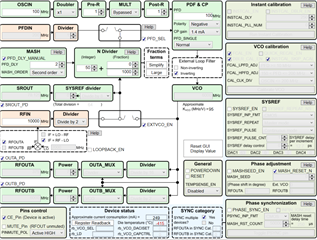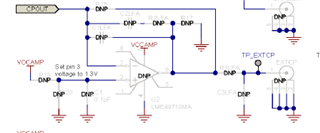Other Parts Discussed in Thread: LMX2820
Tool/software:
Hello I am interested in creating a frequency above 10GHz using an external VCO. I am using the LMX2820EVM as my PFD.
My current settings are as follows:
1) PFD Comparison Frequency: 250MHz
2) External VCO is connected to the RF_IN port
3) Loop filter was designed for 150kHz BW with phase margin of 60 (I've characterized the external VCO to determine its kVCO and entered this into the TI PLL design tool)
4) I've used the 3rd order Type A Active Loop Filter. I am applying a bias voltage of 1.2V to the op-amp's non-inverting input. (0.1uF decoupling cap also installed)
5) MASH ORDER set to: Integer. For PFD_DLY, I've tried values of 5, 6 and 7.
So on a positive note, the LMX2820 is able to lock onto the desired frequency. However there is a lot of noise and spurs in a region 60kHz to 600kHz offset from the main tone.
Any ideas as to how this can be cleaned up.
Thanks.



